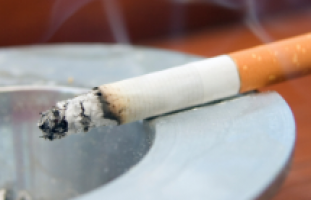
Tobacco quitlines provide an effective avenue to reach people eligible for lung cancer screening
In the first comparative clinical trial of lung cancer screening decision aid versus standard educational information, researchers from The University of Texas MD Anderson Cancer Center have shown that a decision aid delivered through tobacco quitlines effectively reaches a screening-eligible population and results in informed decisions about lung cancer screening.
Lung cancer is the second most common cancer diagnosis among adults in the U.S. and is the most common cause of cancer-related deaths.
Screening for lung cancer with low-dose CT scans is the only secondary preventive service shown to decrease mortality from lung cancer; the primary action to prevent lung cancer is to avoid, or quit using, tobacco products.
While lung cancer screening can save lives, it also carries potential harms.
For this reason, the Centers for Medicare & Medicaid Services (CMS) covers lung cancer screening as a preventive service as long as certain requirements are met, including use of a decision aid during a shared decision-making visit between the patient and physician or qualified practitioner.
The U.S. Preventive Services Task Force recommends the annual screening for adults aged 55 to 80 years who have a 30 pack-year smoking history, meaning the equivalent of smoking a pack of cigarettes a day for 30 years.
In the study published today in JAMA Network Open, the research team worked with 13 tobacco quitlines to identify callers eligible for screening.
The 516 quitline clients who enrolled in the study were randomised to receive a decision aid video called "Lung Cancer Screening: Is It Right for Me?" or a standard lung cancer screening brochure for the control group.
Primary outcomes for the study were preparation for decision-making and decisional conflict.
Secondary outcomes included knowledge of lung cancer screening, intentions to be screened and completion of screening within six months after receiving the decision aid or brochure.
At the one-week follow up, 67.4% of participants who received the decision aid reported they were well prepared to make a screening decision, compared to 48.2% of participants who received the standard educational material.
Among those who received the decision aid, 50% felt informed about their decision choice and 68% reported being clear about their values related to the harms and benefits of screening, compared to 28.3% and 47.4%, respectively, among the control group.
"The quitline clients who received the decision aid were more assured about what was important to them in making the choice about screening and felt better informed," said Robert Volk, Ph.D., professor of Health Services Research and lead author of the study. "Their knowledge of the harms and benefits of screening was much greater than people who received standard educational information. The clients in the control group were making screening choices while being less prepared and aware of the trade-offs between benefit and harms. We want to head off the uninformed choice and help patients make good, informed decisions about screening."
The decision aid video explains eligibility for screening, lung cancer epidemiology and risk factors, and potential harms from screening, including false-positive results, radiation exposure and risks of invasive diagnostic procedures.
The decision aid encourages patients to consider their values while weighing the benefits and harms of screening.
The video also shows a patient receiving a CT scan.
By the six-month follow up, approximately 30% of participants in both groups had scheduled a lung cancer screening; the difference in screening rates between groups was not statistically significant.
Nationally, about 6% of people at risk for lung cancer due to smoking undergo screening, according to the National Institutes of Health.
Based on the study results, funding was received to begin implementing the model nationally by training quitline staff to identify callers who are eligible for screening and provide them with the decision aid.
"We've demonstrated that this is a very effective way to identify people at risk for lung cancer," Volk said. "There's potential to reach thousands of people who are eligible for screening and already addressing their risk for lung cancer by seeking cessation services."
Limitations of the study included screening behaviours based on self-report.
Quitline callers had to express interest in lung cancer screening when asked by quitline staff in order to participate in the study.
The World Cancer Declaration recognises that to make major reductions in premature deaths, innovative education and training opportunities for healthcare workers in all disciplines of cancer control need to improve significantly.
ecancer plays a critical part in improving access to education for medical professionals.
Every day we help doctors, nurses, patients and their advocates to further their knowledge and improve the quality of care. Please make a donation to support our ongoing work.
Thank you for your support.